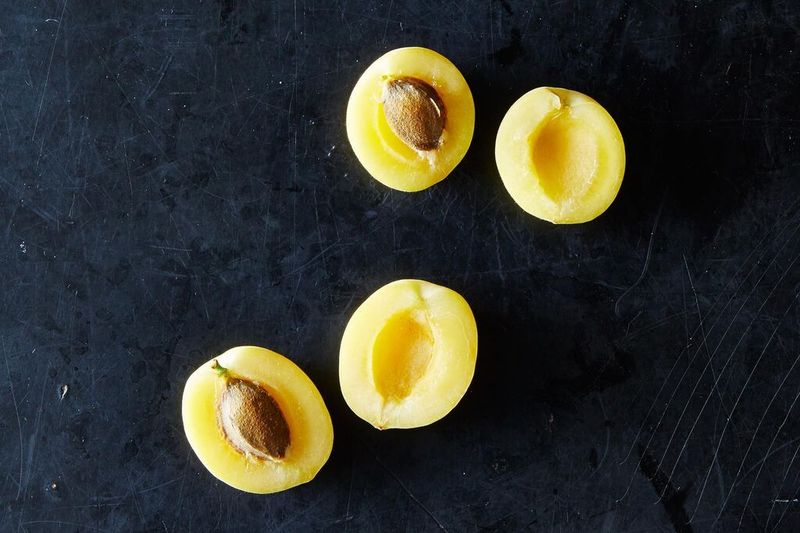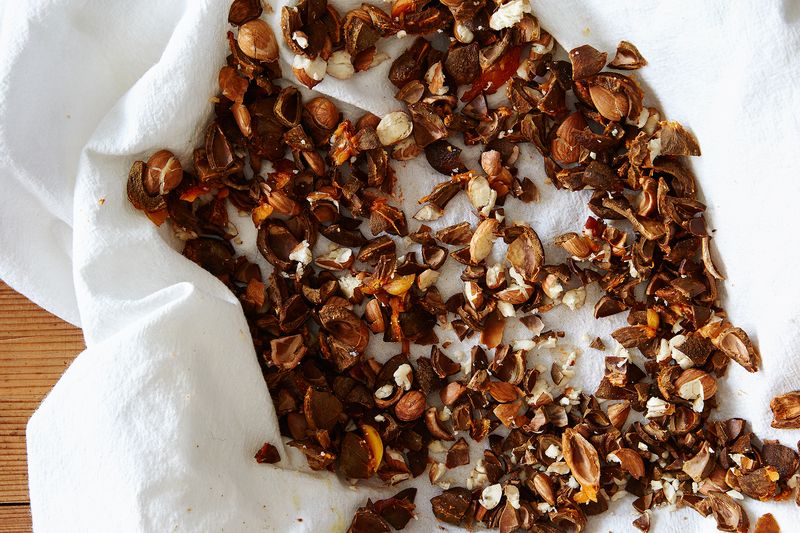Popular on Food52
14 Comments
Mina
July 28, 2016
No, I mean pits. If you look up pictures of peach pit and almond in a shell you can see the similarities. Just wanted to point out that it's not surprising that people find apricot kernels taste like almonds since they are from the same botanical family
Mina
July 27, 2016
Almonds technically are not nuts but belong to the same family as apricots and peaches. You can see the similarities of an almond in a shell to a peach pit
aleeda
July 27, 2016
Can't wait to try this recipe. I have been intrigued by apricot pits ever since I learned they are the source of Amaretto di Sarrono's flavor, not almonds. Alice Waters also has a recipe for Noyaux in her book, My Pantry.
Greenstuff
July 27, 2016
Madeleine Kamman's wonderful book, Savoie: The Land, People, and Food of the French Alps, has a delicious recipe for liqueur de noyaux. You collect peach and apricot pits in a bottle of vodka throughout stone fruit season, let them steep, and add sugar. I have always assumed that her recommendation to use no more than one third apricot pits was because of the cyanide.
PHIL
July 27, 2016
With all the talk lately here at Food52 about food waste, ugly fruit ,gleaning etc.. your comment further shows how people wasted nothing in the past.. every part of the animal or plant was used to extract nutrition and flavor. We take for granted how readily available food is to us now.
Lindsay-Jean H.
July 27, 2016
I remember you sharing that before Chris (probably on a Hotline thread), and appreciate you doing so again -- I'm determined to try it out this year!
Georgia S.
September 6, 2015
Apricot pits contain cyanide. How much is safe to eat?
Lindsay-Jean H.
September 6, 2015
Sticking with a normal serving size of ice cream should be fine. As noted above, this recipe has two steps that make it much less risky: One, you cook the kernels—simmering them in milk, twice—which reduces or eliminates the harmful substances. Two, you don’t actually eat the kernels: You use them as an aromatic to flavor the milk and cream, and then you strain them out.
Laura415
September 6, 2015
If the kernals are toasted or boiled for a short time it deactivates the toxin.
Laura415
August 24, 2015
Awesome idea. I made apricot kernel+blanched almond jam this year a la Christiane Ferber. I still have a bunch of apricot pits in the freezer. There is a liqueur called Ratafia made with stone fruit kernels I've always wanted to try. Apricot season is done on the west coast but there is still freestone peaches to be had:)
Captiosus A.
August 23, 2015
No surprise, the apricot pit is sweet. I have eaten Apricot Pit Jam, so good.




See what other Food52 readers are saying.